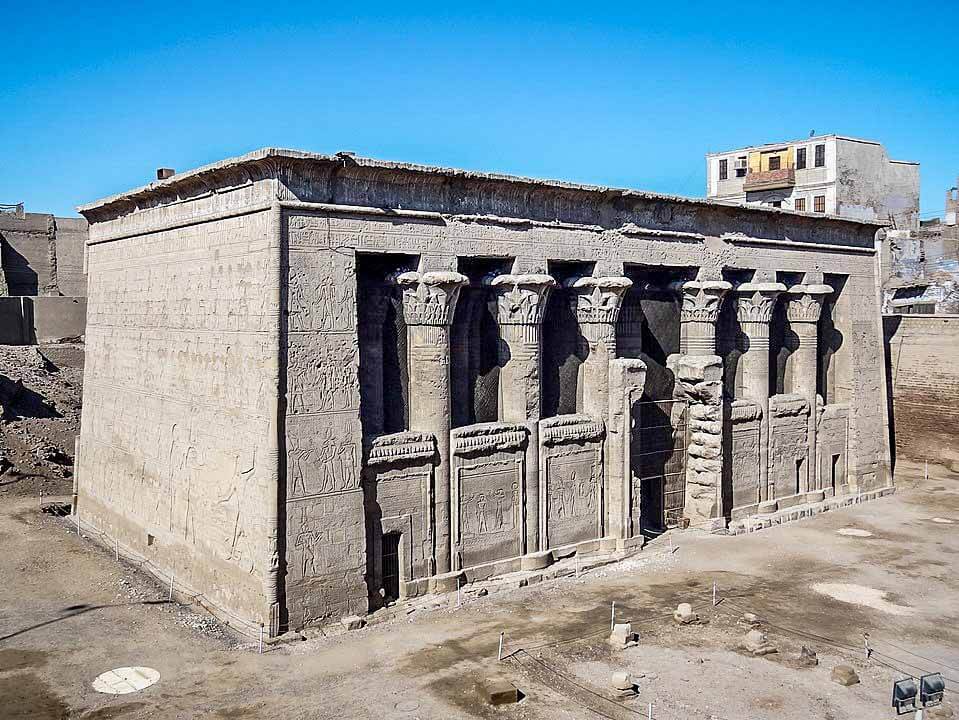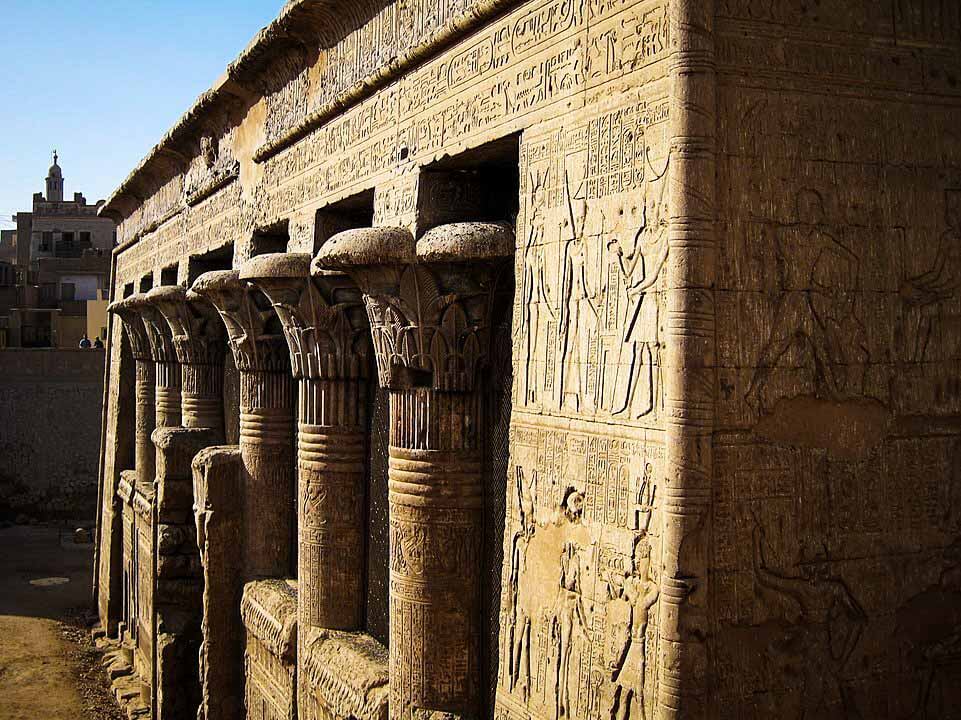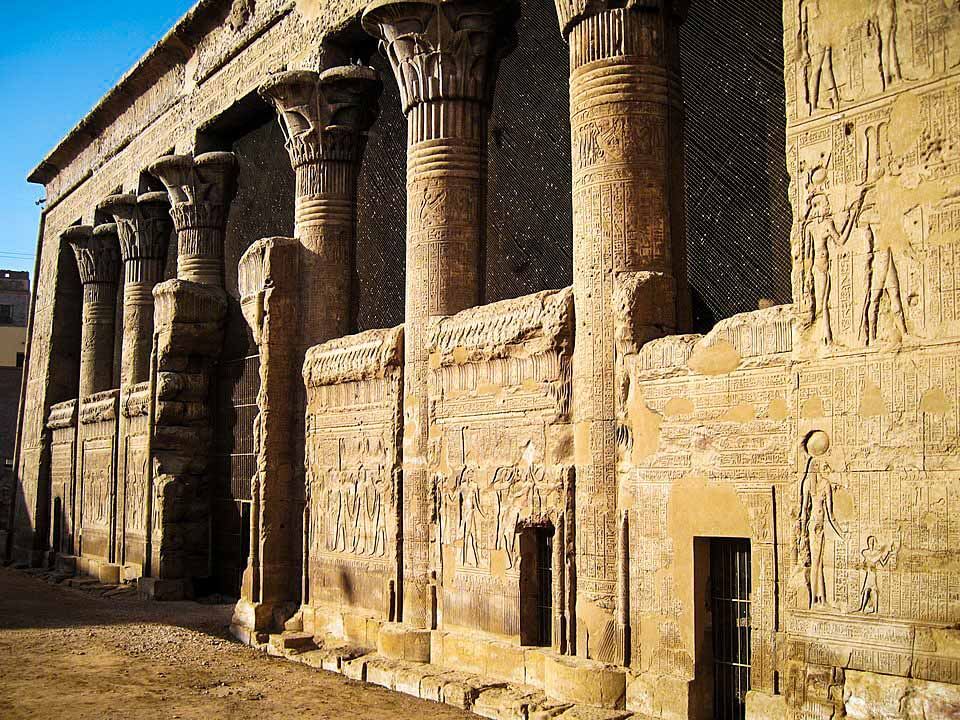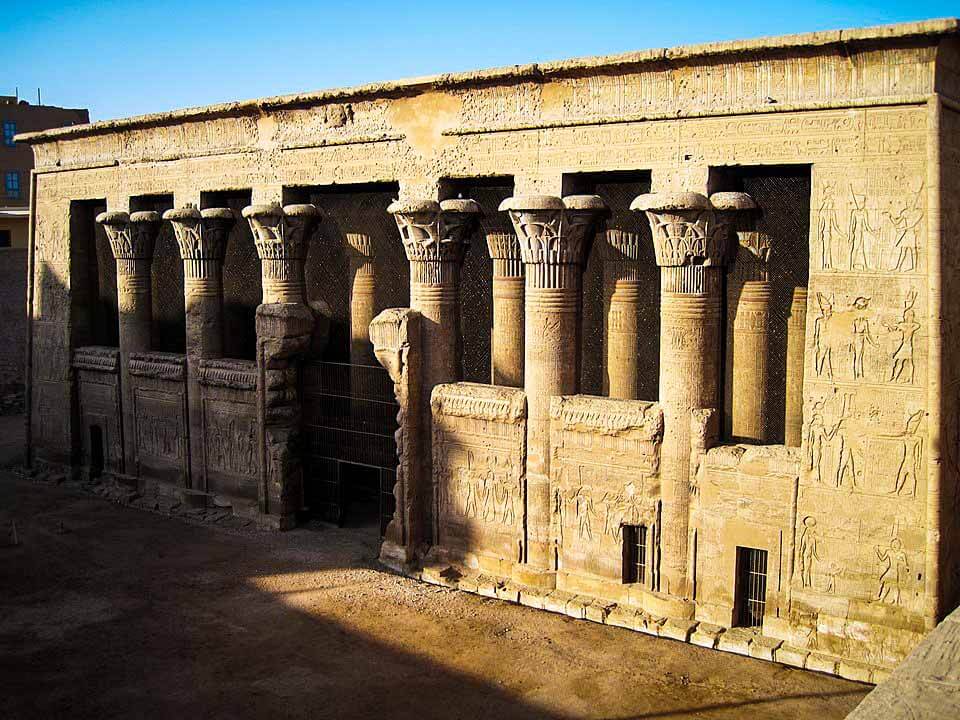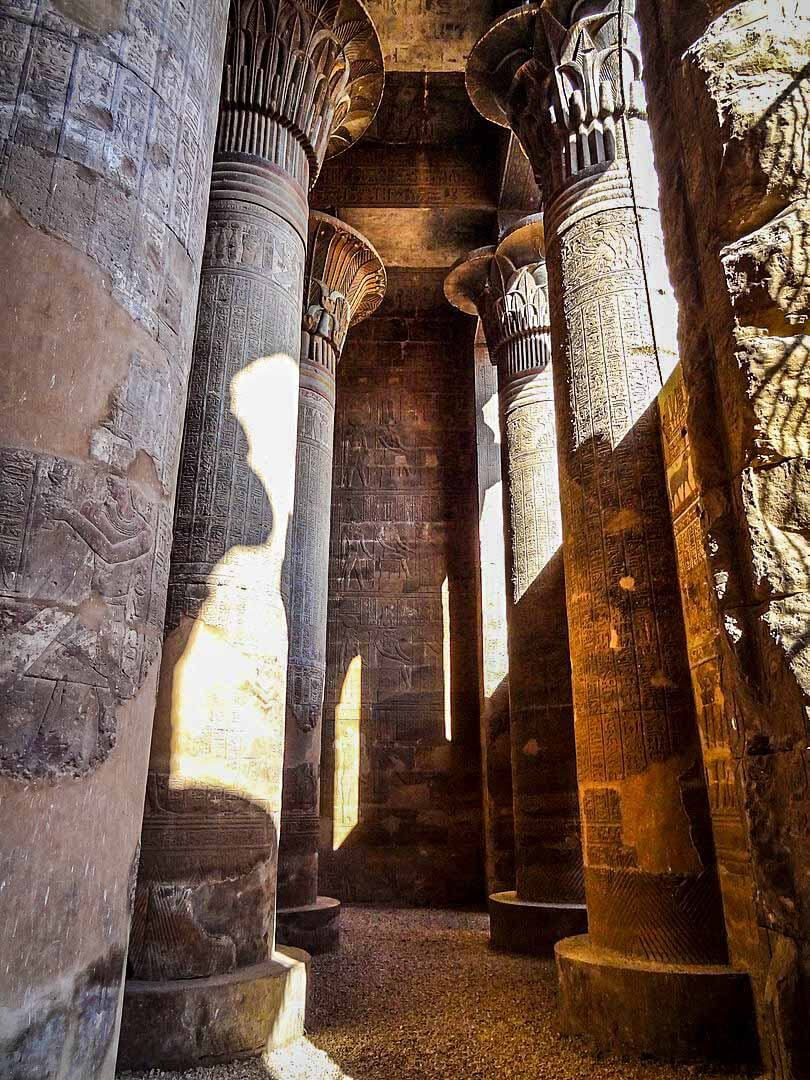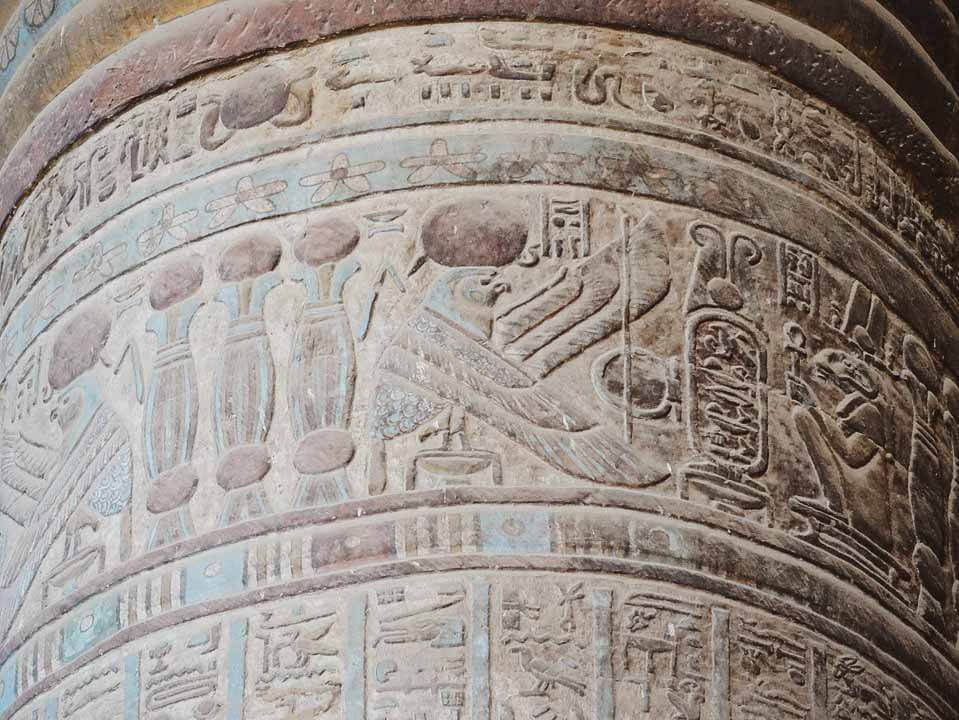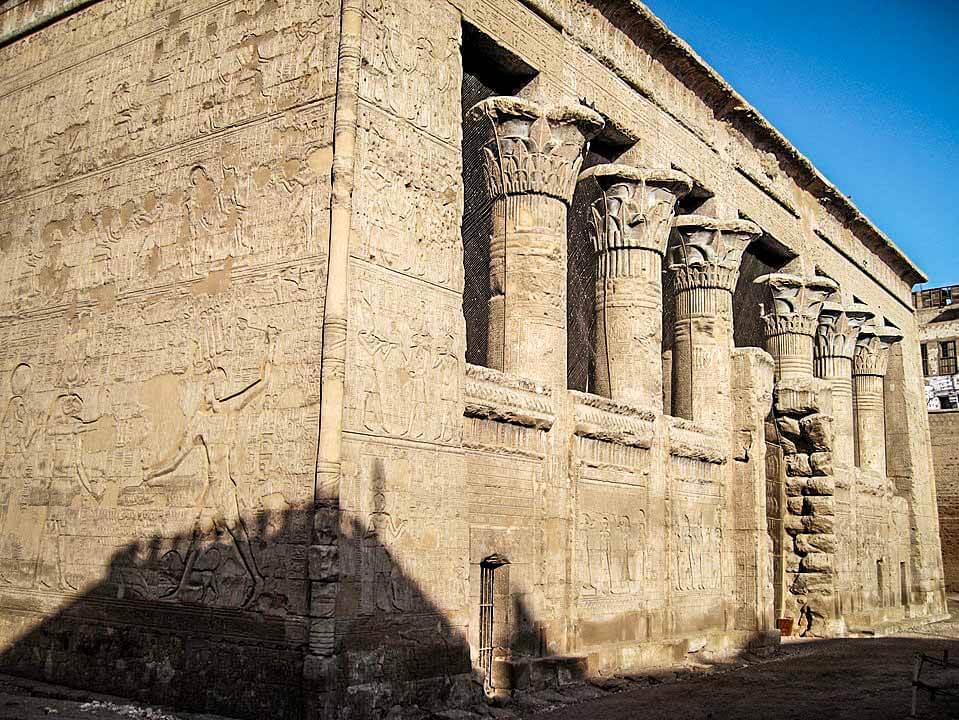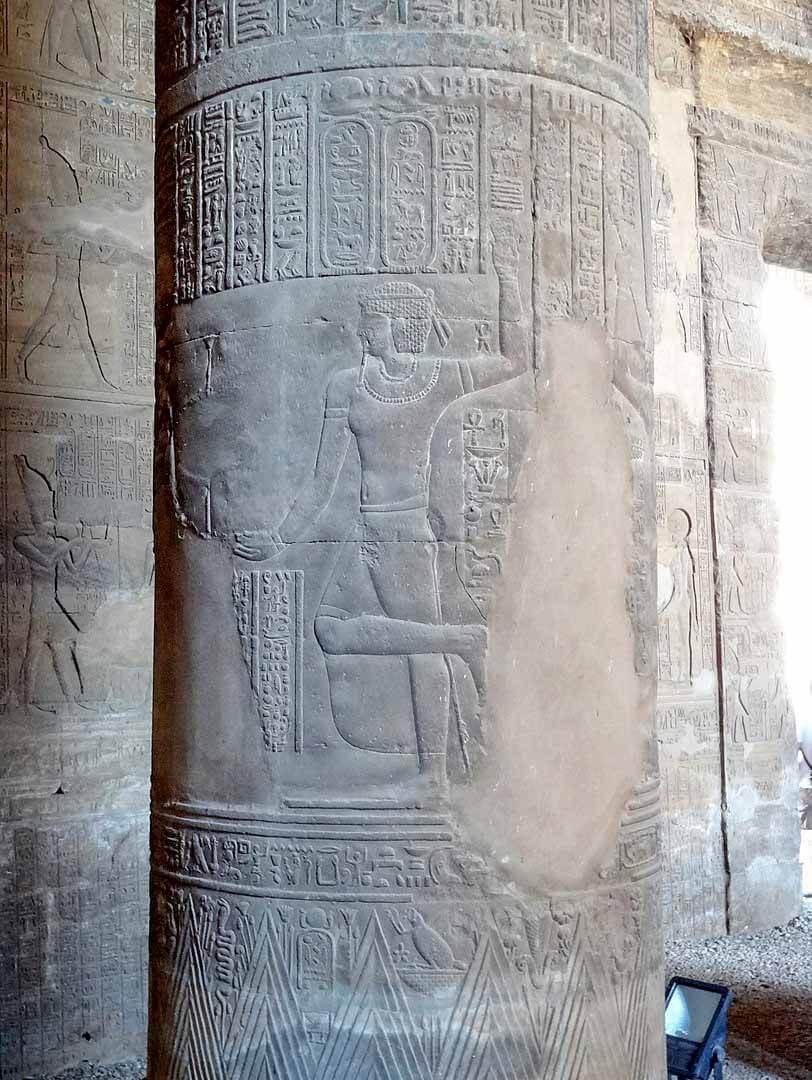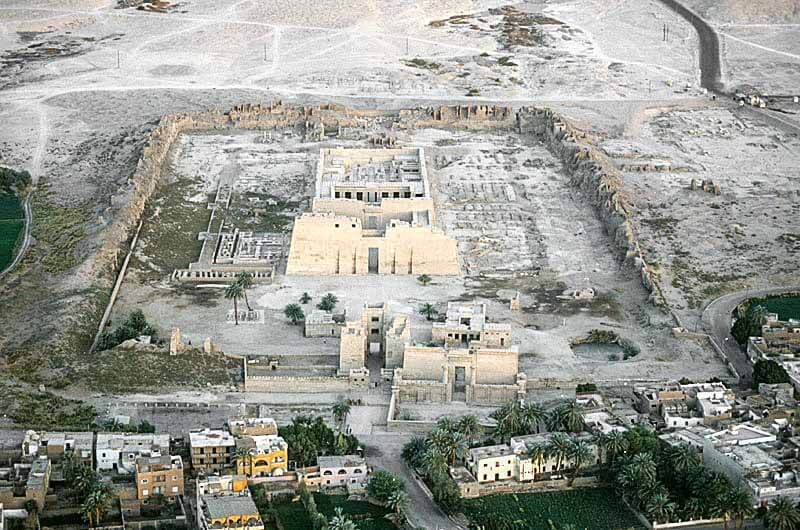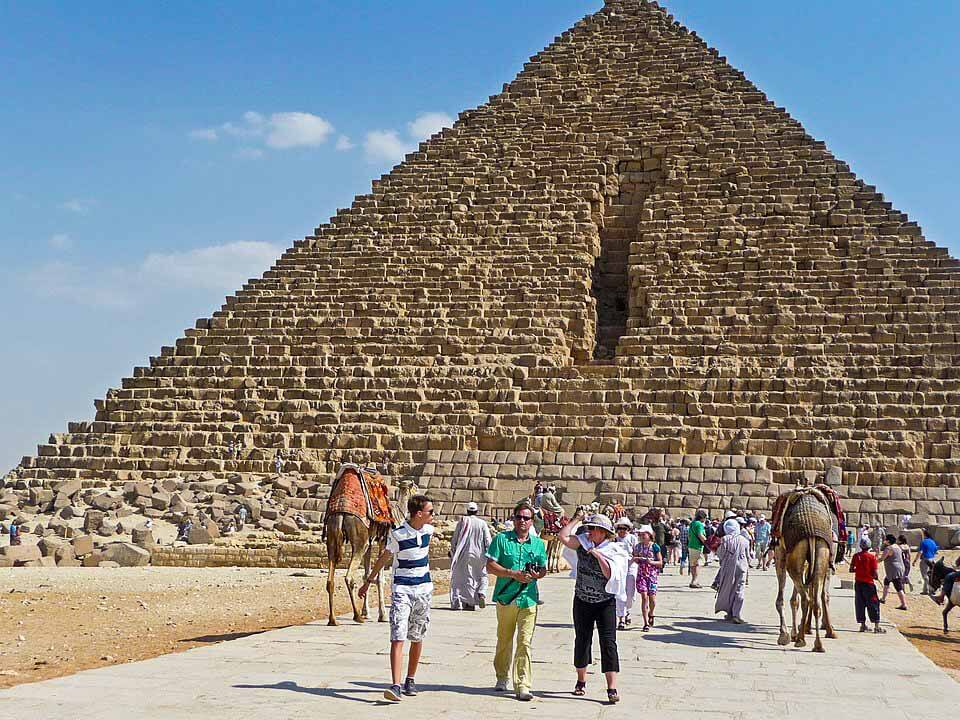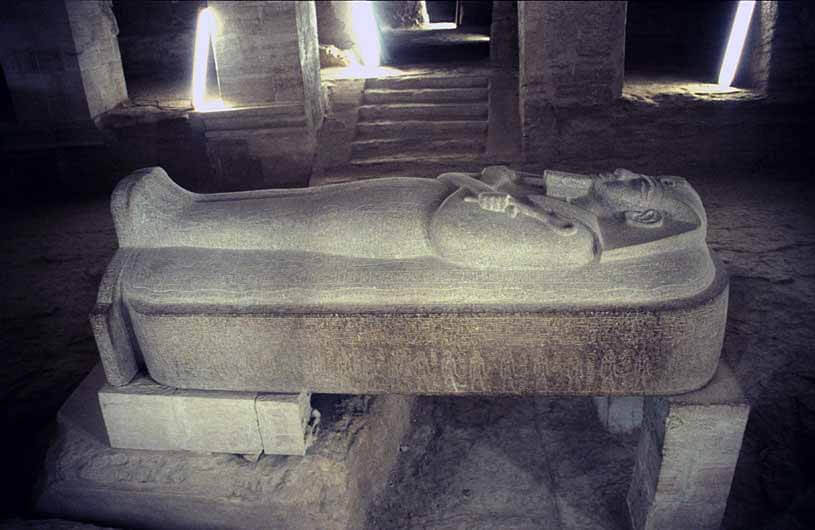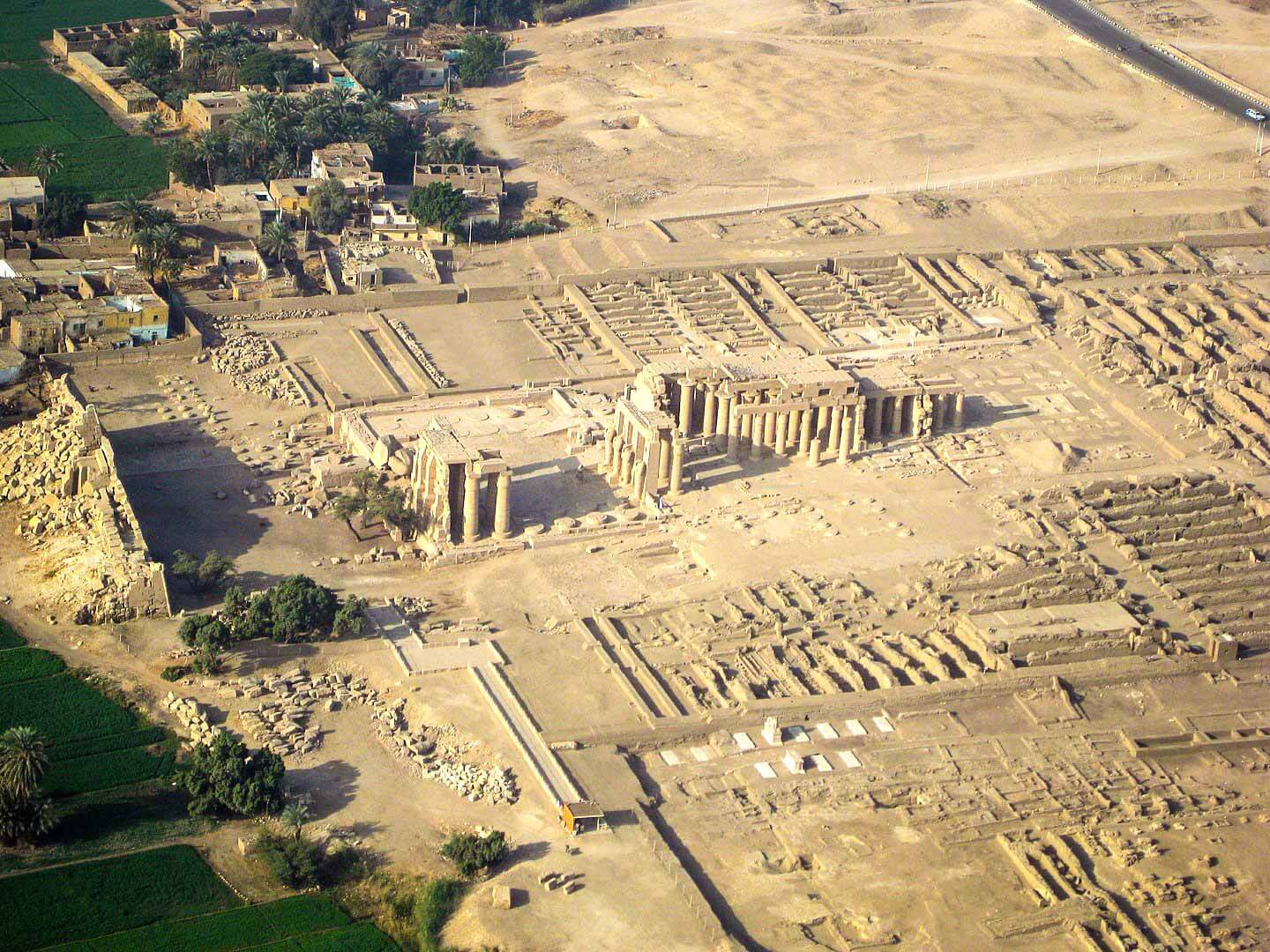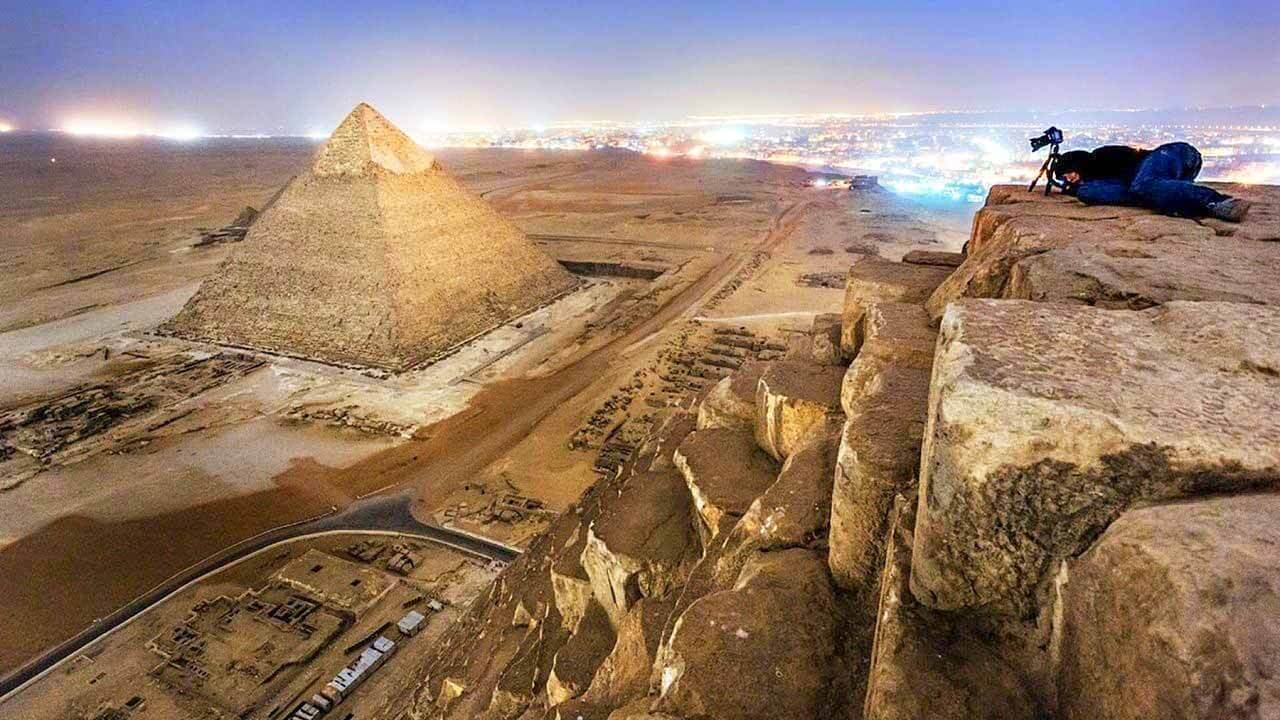Esna, Egypt
Coordinates: 25.293454, 32.556263
The temple contains very late hieroglyphic inscription, dating from the reign of Decius (249–251 AD).
Another temple of the same period has been identified at Kom Mer, about 12 km to the south, but cannot be excavated because a modern village is built over it.
Khnum was one of the earliest-known Egyptian deities, originally the god of the source of the Nile in the Egyptian Mythology. Since the annual flooding of the Nile brought with it silt and clay, and its water brought life to its surroundings, he was thought to be the creator of the bodies of human children, which he made at a potter’s wheel, from clay, and placed in their mothers’ wombs. He was later described as having moulded the other deities, and he had the titles “Divine Potter” and “Lord of created things from himself”.
The temple was completely covered and is a full excavation. It is encircled by building. You will descend 50 feet or so, to the old level of Esna and the temple.
This is an under rated temple complex just below Luxor. Many people by pass this and travel from Luxor to Edfu/Kom Ombo etc or visa versa. However, the small town is worth seeing, and also the temple. The two main points of interest in Esna are its lively market, which fills a couple of streets leading inland from the corniche. In order to appreciate Egypt you really need to step outside the comfort zone and see a working Egyptian town in full swing.
This is just a single building effectively in a large hole excavated in a quite shabby street in the middle of the town found when excavating for new buildings. It is a significant size accessed by a stairway down so that after appreciating it at roof level you are then at what once was ground level to enter. But before entering admire the carvings that cover all the external walls and then the decorated walls, ceilings and pillars inside which are covered with carvings. But what sets this apart from many better known sites is the original colouring still in place. A stunning building and worth a visit.
A Quick not so fun fact about this temple is that people were required “to comply with the strict rules regarding ritual purity.” According to inscriptions carved on the walls of the Temple of Esna, those who entered this temple were expected to fastidiously cut their fingernails and toenails, remove other body hair, wash their hands with natron (a natural occurring salt), “be dressed in linen (they were forbidden from wearing wool), and not to have had sexual intercourse for several days. So the rituals are not carried on to day – Obviously.
Know This
After a 10 minute walk through the village, you come to this temple that is beneath street level. Slowly the temple and surrounding buildings was covered by silt, probably from floods of the nearby Nile. Eventually people forgot it was there and built their village at the site.


